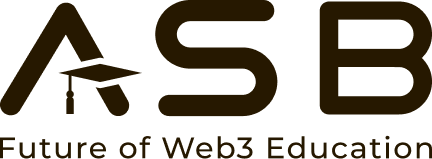A Complete Guide to Becoming a Full-Stack Developer
The rapid advancement in web technologies is fueling an increasing need for full-stack developers. Whether you are a fresher or a seasoned developer seeking to broaden your skill set, the field of full-stack development opens up a world of opportunities for you. As it mandates knowledge and proficiency in both front-end and back-end technologies, so many aspiring developers are unsure about where to begin
In this article, we present you with the right steps to becoming a competent full-stack developer.
What is Full-stack Development?
The process of constructing the front-end and back-end architecture of a website or web application is known as full-stack software development.
All the components of a software program that users directly interact with are referred to as the front-end, or client-side. Front-end development determines the design and other visible elements of the website, along with its adaptability to various screen sizes and devices. This side is built with the help of programming languages like HTML, CSS, and JavaScript.
On the other hand, the back-end, or server-side, is indicative of the technical components that operate in the background to process logic, handle requests, retain sensitive data, etc. Back-end development involves creating and enhancing the internal software that runs the servers, databases, and associated applications using tools and frameworks like NodeJS, PHP, etc. The paths for information delivery to and from users operating front-end interfaces are built using back-end technologies.
So, being a full-stack developer implies creating aesthetic and interactive websites while making sure that everything is working well behind the scenes too.
Rising Demand of Full-Stack Developers
With the growth in digitization and the emergence of new technological innovations, the need for full-stack developers has multiplied manifold in almost every sector. A recent LinkedIn research report states that full-stack professionals are one of the most sought-after IT workers.
The realm of full-stack development picked up pace in the 2010s as new tools and frameworks appeared, leading to a wide range of skills and career profiles. Today, these experts play a prominent role in several industries, including IT, finance, telecommunications, insurance, arts and entertainment, transport, tourism, etc. Adept at navigating the complexities of web development, full-stack developers convert business requirements into innovative and integrated technology solutions. According to the US Bureau of Labor Statistics, the field of full-stack development is expected to show an increase of 16% in employment between 2022 and 2032, compared to the average of just 3% growth for all occupations.
Besides, this domain offers one of the highest-paying jobs globally. As various industries upgrade to the latest technologies, the complexity of websites and apps rises, and so do the requirements for efficiency and agility and the demand for qualified full-stack development specialists.
How to Become a Full-Stack Developer?
If you are set on becoming a full-stack developer, you will need to learn certain concepts and do adequate practice before stepping into the professional arena. Here’s a breakdown of the essential things to know and pursue, in order to make it big in the area of full-stack software development:

Determine the Necessary Skills and Qualifications
The first step to learning is to examine what you already know and what more you need to know. For instance, if you have an educational degree in technology or engineering, you can take up a certification course or contemplate obtaining a master degree. However, if you have a non-technical educational background, you may need to opt for a vocational course prior to enrolling in a specific certification.
Similarly, the learning path is different for an experienced professional and that of a fresh graduate. Generally, full-stack expertise entails a good hold over particular programming languages, front-end and back-end tools and technologies, and related frameworks.
Acquire the Requisite Knowledge
In the age of information overload, there are a great many resources to help you learn the basics of full-stack development. But, it is important that you rely on top-rated and authentic sources of information only.
Once you have obtained the foundational knowledge of computers and connected technologies, you can take up a certified full-stack development course extended by renowned institutes like ASB (Antier School of Blocktech). Curated by industry experts and trainers, ASB’s certification in full-stack development involves hands-on training projects and career assistance for the trainees.
Implement the Acquired Knowledge
After completing the required education and related project work, you need to invest more time into practicing and polishing your skills. You can begin by developing codes for simple websites, designing and deploying further, and creating dynamic eye-catching websites and apps. Also, you can find open-source full-stack projects on platforms like GitHub, GitLab, etc.
Build your Portfolio and Find a Suitable Job
Your portfolio puts the first impression on prospective employers. So, you must make sure that it highlights your qualifications, relevant skills, your contribution to projects, related internships, etc. Accordingly, do update your resume and cover letter. For the interviews, you should prepare as per the industry to which the organization belongs.
Takeaway
With their extensive skill set combining front-end and back-end development skills, full-stack engineers are able to design dynamic and interactive web apps from start to finish. So, if you wish to stay at the forefront of technology by working with leading organizations, full-stack development is the right choice for you! Once you establish yourself in this profession, the industry’s significant growth potential will propel your further progress.
